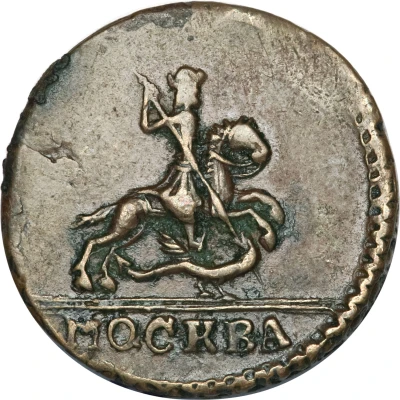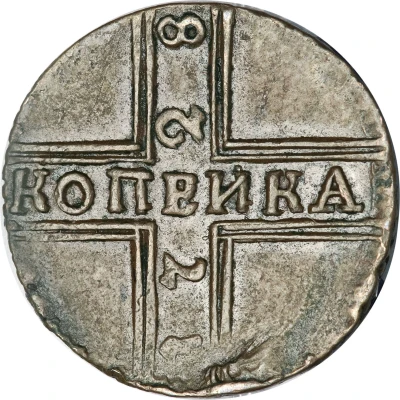Kopeck - Ekaterina I Plate money
1726 year| Copper | - | - |
| Issuer | Russian Empire |
|---|---|
| Empress | Catherine I (1724-1727) |
| Type | Non-circulating coin |
| Year | 1726 |
| Value | 1 Kopeck (1 Копейка) (0.01) |
| Currency | Rouble (1700-1917) |
| Composition | Copper |
| Shape | Square |
| Demonetized | Yes |
| Updated | 2024-10-07 |
| Numista | N#102926 |
|---|---|
| Rarity index | 95% |
Reverse
Script: Cyrillic
Comment
Issued between 1725-1727 in various sizes containing copper equal to value of similar denominations of silver coinage. Obviously they copied the format of the Swedish plate money introduced in 1702.Interesting fact
The Kopeck - Ekaterina I (Plate money) 1726 coin from the Russian Empire made of Copper is interesting because it was part of a unique monetary system in Russian history. The "plate money" was introduced by Peter the Great in 1724, and it was made of large copper plates with different denominations stamped on them. These plates were used as currency and could be broken down into smaller pieces, similar to how modern-day bills can be torn off in smaller denominations. This system was used until 1735, and the Kopeck - Ekaterina I coin is a rare surviving example of this interesting monetary experiment.

